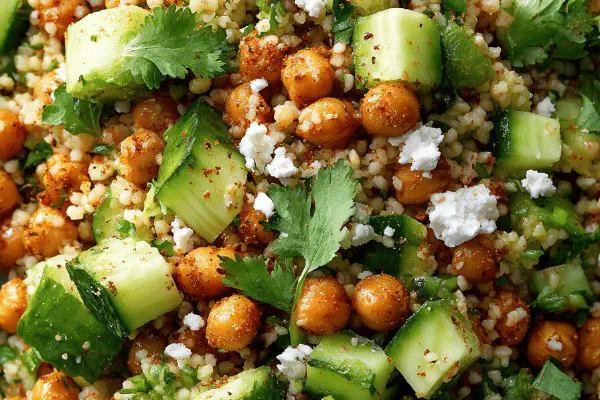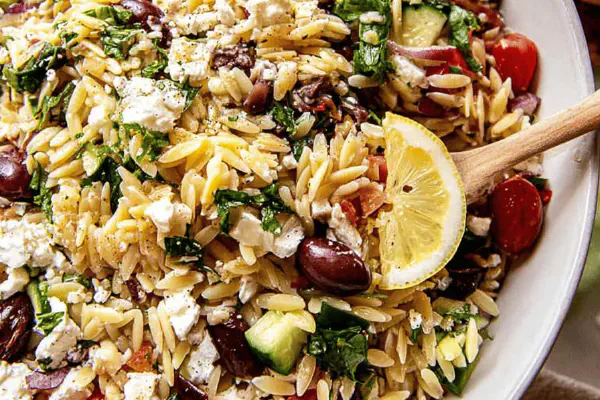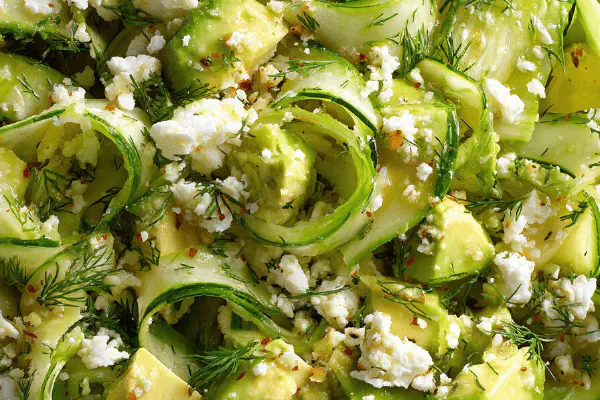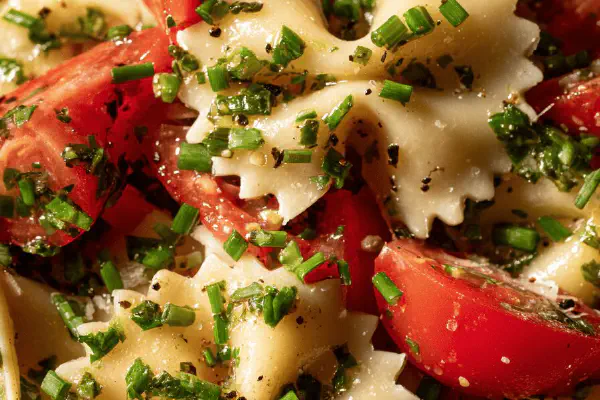Chunky Veggie Chickpea Couscous Salad

By Emma
Certified Culinary Professional
Ingredients
- 1 small red onion, finely chopped
- 50 ml olive oil (approx 3 ½ tablespoons)
- 3 ml ground cumin (about ¾ teaspoon)
- 3 ml ground coriander (about ¾ teaspoon)
- 1 large garlic clove, minced
- 400 ml vegetable or chicken broth, hot
- 320 g couscous (approx 1 ¾ cups)
- 1 can (398 ml) chickpeas, rinsed and drained
- 1 green bell pepper, seeded and diced
- 2 Lebanese cucumbers, unpeeled and diced
- 60 g goat cheese, crumbled
- 125 ml fresh chopped cilantro
- Salt and black pepper to taste
About the ingredients
Method
- Heat oil over medium heat in a large nonstick skillet. Toss in the onion and cook until edges start to caramelize, about 8 minutes. You want golden, not burned; smells sweet and sharp. Stir in cumin, coriander, and garlic. Toast spices for another 2-3 minutes—the aromas should bloom, spicy and nutty. Season a little now with salt and pepper; it wakes the flavor.
- Pour in hot broth, bring to a lively simmer. Pull from heat. Stir in couscous quickly, cover with lid or foil. Let sit undisturbed for roughly 7 minutes, until all liquid absorbed and couscous grains puff up tender but not mushy. Fluff with a fork, teasing grains apart to avoid clumps. Let cool until mostly warm, not hot—hot kills freshness downstream.
- In a large bowl, toss chickpeas, bell pepper, cucumbers, goat cheese, cilantro. Add couscous last. Mix all gently but thoroughly so flavors marry without squishing the veggies. Check seasoning. Couscous acts like a sponge—likely needs more salt or pepper. Adjust as needed.
- Serve slightly chilled or room temperature. Leftovers? Chill—flavors deepen overnight.
- Optional twist: swap goat cheese for crumbled halloumi for firmer texture. Use fresh mint instead of cilantro for a brighter finish. Sometimes I add toasted pine nuts for crunch; skip if nut-free required.
Cooking tips
Chef's notes
- 💡 Caramelize onions slow on medium heat; edges golden, smell sweet but not burnt. Stir often but not constantly. Watch color—deep amber, not black. Stir in cumin and coriander only when onions are clearly softened; toasting spices on dry pan kills aroma fast. Garlic minced finely, add last to prevent burn. Olive oil quantity matters; slightly more helps draw out onion sugars without frying.
- 💡 Use hot broth straight off boil, pour over couscous and cover tightly; no peeking for 7 minutes minimum. Steam traps heat inside grains, makes puff up tender but still separate. Fluff with fork gently to tease apart. Avoid clumps or mush by fluffing before cooling. Let stuff cool below hot; warm keeps freshness but not heat soaks veggies soft or limp.
- 💡 Chickpeas rinsed well to cut canned tin flavor and excess sodium. Mix veggies and goat cheese before tossing couscous. Big pieces stay intact, texture contrast sharper. Salt after combined—broth and cheese already salty variable, taste first then adjust. Try halloumi for firmer, salty bite, but warm toss only; cold it stiffens and crumbles less.
- 💡 Cilantro chopped fresh right before mix—early chopping dulls vibrancy. Mint swap refreshes but less sharp, balances spice differently. Lebanese cucumbers unpeeled save prep time; scrub well or wax might coat. Bell pepper green substitutes red for milder earthiness, adds crisp vegetal note but still sweet. Garlic minced, no press; pressed garlic can taste too sharp or bitter in toasted spice base.
- 💡 Leftovers improve overnight in fridge; flavors marry but salad still holds texture. Serve room temperature or slightly chilled; warm vegetables with hot couscous throws off mouthfeel. Pine nuts optional; toast separately for crunch, add last. Nut-free skip. Broth swap possible—vegetable light, chicken richer, both shift flavor slightly but work. Small adjustments in salt needed sometimes.
Common questions
Can I use water instead of broth?
Water works, yes. Couscous will hydrate, but broth adds depth. Use vegetable or chicken broth if possible. If not, add more spices or salt after cooking. Fluff couscous well to avoid pasty texture.
What if couscous clumps after cooking?
Fluff immediately with fork. If clumps form, dry heat low in pan can separate grains. Avoid stirring raw couscous into hot broth multiple times; pouring all at once best. Cover directly; no steam loss. Timing is key, over-soaking mushy results.
Can I prepare this salad ahead?
Yes, but keep veggies separate if possible or add just before serving for crunch. Overnight chilling improves flavor meld but softens some texture, especially goat cheese and bell pepper. Cool to room temperature before refrigerating to avoid soggy salad.
How to store leftovers properly?
Airtight container in fridge best. Use within 2 days for freshness. Can freeze couscous separate but salad texture suffers. If fridge-stored, stir before serving; flavors settle unevenly. Leftover goat cheese may firm—crumbled again with fork.



